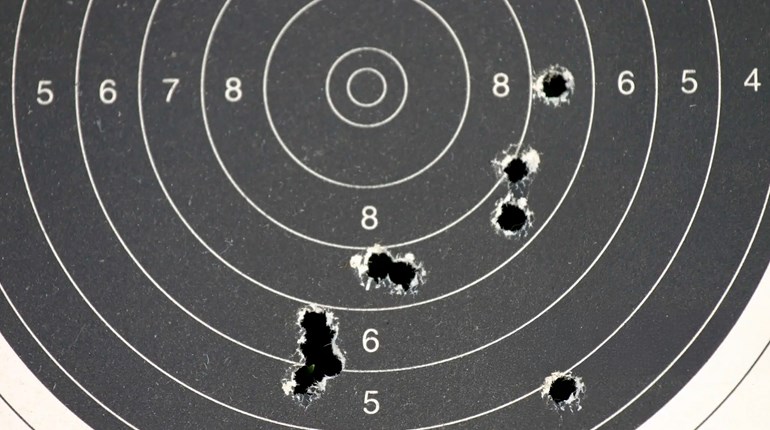
The Problem
You carry a gun for personal defense and sometimes shoot for pleasure. Your time is limited when you get to the range, so your practice regimen is much the same with every visit. Routine practice helps to maintain proficiency in the skills with which you are familiar. One of your shooting friends quizzes you about why you don’t work on skills that you aren’t as good at performing. A valid question, but you don’t want to lose the skills you already have. Why should you practice new things when they may degrade what you already are comfortable and capable with?
The Solution
Certainly, validation of acquired skills is important. However, there is little likelihood of those skills degrading if others are added to the skill set over time. In fact, newly learned skills may help to improve those learned previously by increasing the attention paid to the mental, visual and physical aspects of accurate-shot delivery utilized when practicing familiar shooting drills.
A good way of maintaining existing proficiency is to allocate time at the end of a session of practicing something different, just to shoot the more-familiar drill set one time to validate previous ability.
This could be reversed, performing the validation drill first and then moving on to something more challenging, provided the discipline to move out of the comfort zone is exercised. The tendency here is to shoot the validation until it is “perfect,” which eats up the time allocated for practicing the more-difficult skill.
An example of how a different or unperfected skill helps to improve already familiar shooting techniques is shooting with the non-dominant hand. It is rare that the average shooter shoots as well with one hand as the other. So, it can be considered that the performance level with the non-dominant hand is sub-par when compared to the dominant one. This is why some instructors or coaches refer to the non-dominant hand as the “weak” hand.
Thinking that the non-dominant hand performs at a lower level than the dominant hand, an individual tends to focus on the shot-delivery process with a higher level of intensity visually, mentally and bio-mechanically. This higher level of intensity, once realized, can and will transfer over to dominant-side shooting, thus improving the skill sets with which a shooter is already familiar. This is because it is common for a shooter to get a little lazy shooting a familiar drill, usually without realizing it.
This becomes readily apparent when the flash and smoke at the muzzle is noticed more often, if not every time, as is the brass ejecting from the ejection port. Given this condition, the shooter realizes their intensity of focus has waned when shooting in their comfort zone and improvement must be made to maximize their performance.
Being mindful that practice is primarily intended to validate, sustain and improve already learned skills, learning can take place through self-diagnosis as noted in the aforementioned example.
To avoid becoming stagnant in practice sessions, it is always good to involve drills that aren’t delivering the best performance for you. Doing so will broaden the base of skill sets and increase proficiency in the drills that are less challenging. By setting goals involving the more-challenging drills along with the more-familiar drills and sticking to the allotted times in the practice sessions, progress in shooting performance overall will be realized in a more-expedient manner.





































